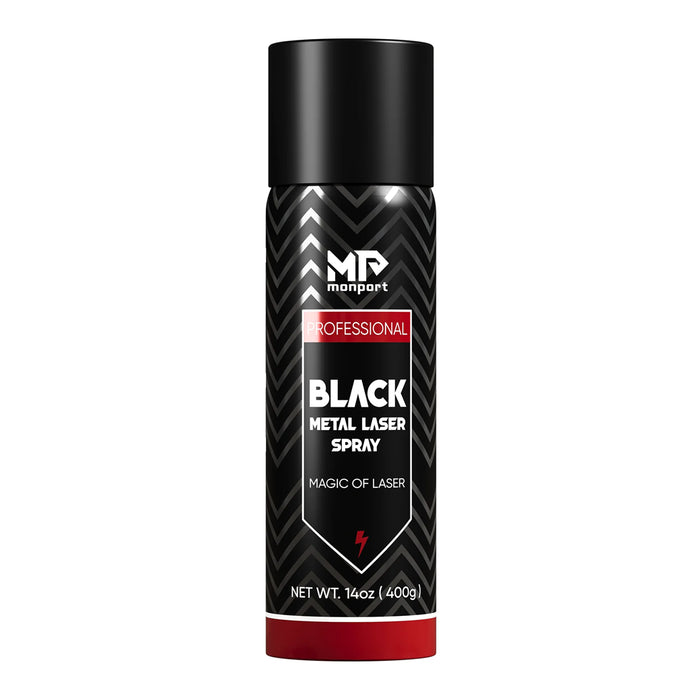Two of the most common types of lasers used in various industries are YAG laser VS CO2 laser. While both offer unique capabilities, understanding their differences is crucial in selecting the right tool for your specific needs, especially when comparing YAG laser VS CO2 laser as the best laser engraver software. In this blog post, we'll delve into the key distinctions between YAG laser VS CO2 laser, highlighting the strengths of each and exploring the diverse CO2 laser uses.
Monport 80W CO2 Laser Engraver & Cutter (36" x 24") with FDA Approved
Read More : CO2 laser engraving in packaging industry
Understanding YAG laser VS CO2 laser
CO2 Laser

A CO2 laser is a gas laser that produces a beam of light through the amplification of carbon dioxide molecules. It is known for its high power output, making it ideal for cutting, engraving, and marking a wide range of materials, including wood, acrylic, and metal. best laser engraver software.
YAG Laser
YAG (Yttrium Aluminum Garnet) lasers employ a solid-state crystal as their gain medium. They are known for their high peak power and short pulse durations, making them well-suited for precision applications like welding, drilling, and marking. CO2 laser vs YAG laser comparisons highlight that YAG laser marking machines are especially suitable for metals, ceramics, and plastics. A rotary laser engraver is also highly effective for YAG lasers when working with small or round objects. Best laser engraver software.
YAG laser VS CO2 laser: Key Differences
| Feature | CO2 Laser | YAG Laser |
|---|---|---|
| Wavelength | 10.6 micrometers | 1.064 micrometers |
| Material Absorption | Well absorbed by most materials | Better absorbed by metals |
| Cutting Ability | Excellent for cutting non-metals | Good for cutting thin metals |
| Engraving | Versatile for various materials | Suitable for metal marking and engraving |
| Power Output | High power levels available | Typically lower power compared to CO2 |
CO2 Laser Uses: A Versatile Tool
CO2 lasers have a wide array of applications across industries. Let's explore some of the most common uses:

-
Woodworking: CO2 laser vs YAG laser comparisons show that CO2 lasers excel in cutting, engraving, and marking wood. From intricate designs on cutting boards to precise cuts for furniture components, CO2 lasers offer unparalleled precision and efficiency. When coupled with a rotary laser engraver, intricate wood designs become even more achievable. Best laser engraver software.

-
Acrylic Cutting and Engraving: The clarity and versatility of acrylic make it a popular choice for various applications. CO2 laser vs YAG laser comparisons highlight that CO2 lasers can effortlessly cut and engrave acrylic sheets, creating stunning signs, awards, and decorative items. A rotary laser engraver can enhance the process by providing more consistent results on curved surfaces.

- Paper and Cardboard Cutting: From intricate paper crafts to packaging prototypes, CO2 lasers provide clean and accurate cuts in paper and cardboard. A rotary laser engraver can be used here to achieve better results when engraving on cylindrical paper products.

- Textile and Fabric Cutting: CO2 lasers can cut a variety of textiles, including leather, cotton, and synthetic fabrics, with precision and speed. Rotary laser engravers are useful in fabric engraving for added details on fabrics in cylindrical forms or larger materials.
Monport 80W CO2 Laser: A Cutting-Edge Solution
Monport Laser offers a range of high-quality CO2 lasers, including the impressive 80W CO2 Engraver. This machine boasts a combination of advanced features and exceptional performance, making it an ideal choice for both hobbyists and professionals. Pairing the Monport 80W with a rotary laser engraver can provide superior precision, especially in handling cylindrical and curved objects. CO2 laser vs YAG laser comparisons highlight the advantages of CO2 lasers for engraving non-metal materials with high detail and efficiency.
Key Features of the Monport 80W CO2 Laser:

- Fireproof Viewing Window: Ensures safety during operation.
- Enclosed Aeronautical Aluminum Rail: Provides durability and precision.
- Laser Protective Glasses: Protects your eyes from harmful radiation.
- Ruida Digital Controller: Offers compatibility with various software.
- High Speed and Resolution: Delivers exceptional engraving and cutting quality.
- Autofocus: Simplifies the focusing process.
- Built-in Air Assist: Improves cutting and engraving accuracy.
- Multiple Connectivity Options: Provides flexibility in system integration.
- Red Dot Guidance: Enhances precision and ease of use.
- Automatic Safety Sensor: Prioritizes user safety.
Q&A
Q: What is the main difference between a CO2 laser and a YAG laser?
A: The main difference lies in their wavelength and material compatibility. CO2 lasers (10.6 micrometers) are better for cutting and engraving non-metals like wood, acrylic, and textiles, while YAG lasers (1.064 micrometers) are better absorbed by metals and excel in precision marking and engraving on metals, ceramics, and plastics.
Q: Which laser type is best for woodworking projects?
A: CO2 lasers are the best choice for woodworking projects because they deliver clean, precise cuts and engravings on wood. They can create detailed designs, furniture components, and decorative items with high efficiency.
Q: Can a CO2 laser engrave metals effectively?
A: Standard CO2 lasers are not as effective on bare metals compared to YAG lasers, but using tools like Monport black laser marking spray allows CO2 lasers to produce high-contrast, permanent markings on metals such as aluminum, brass, and stainless steel.
Q: What are the key advantages of the Monport 80W CO2 Laser Engraver?
A: The Monport 80W CO2 Laser Engraver offers high speed and resolution, autofocus, a built-in air assist, multiple connectivity options, safety features like a fireproof viewing window, and compatibility with various software, making it a versatile and precise engraving solution.
Q: When should you use a rotary laser engraver with a CO2 or YAG laser?
A: A rotary laser engraver is ideal when working with cylindrical or round objects, such as bottles, tumblers, or cylindrical wood pieces. It allows for even and accurate engraving on curved surfaces, enhancing the versatility of both CO2 and YAG laser systems.
Enhance Your Metal Engraving with Monport Black Laser Marking Spray

Monport black laser marking spray is designed to provide sharp, high-contrast markings on a variety of metals, including aluminum, brass, and stainless steel. When used with CO2 laser engraving machines, this black laser marking spray ensures a smooth, even application that delivers long-lasting, permanent marks. The quick-drying formula of this spray helps maintain a fast-paced workflow, allowing the markings to dry in just minutes. With its easy-to-use design, Monport black laser marking spray creates professional-grade results for any metal engraving project. Whether you’re customizing tools, jewelry, or industrial parts, this black laser marking spray will ensure your creations stand out with exceptional precision and clarity.
Conclusion
Choosing between a YAG laser vs CO2 laser depends on your specific needs and the materials you plan to work with. CO2 lasers, with their versatility and high power output, are ideal for a wide range of applications, particularly in the woodworking, acrylic, and textile industries. For those working with cylindrical or round objects, a rotary laser engraver enhances the precision and flexibility of CO2 lasers. Best laser engraver software options can further optimize performance and efficiency.
Monport Laser's 80W CO2 Engraver offers an exceptional combination of features and performance, making it a valuable asset for any business or individual seeking precision laser cutting and engraving capabilities.










